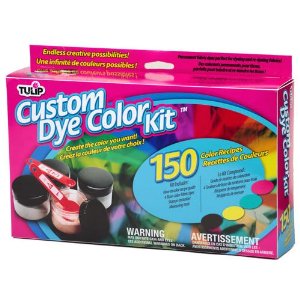Would it be better to use different amounts of dye for each color, in making a dye color matrix chart?
Would it be better to use different amounts of dye for each color, in making a dye color matrix chart?
Country or region: Maui, USA
Message: I recently took a class on dyeing fabric where we made a matrix of color using MX dyes. In the very first step, the instructor had us measure out the same amount of dye for each 100mls of water. We then proceeded to dye fabric using these mixtures. The result was a beautiful array of colors, but honestly, my gut tells me more care should have been taken in that very first step. My hunch is that the true nature of the dyes are not expressed in our sample books because we used a generic formula to mix them. Are you able to give me your opinion on whether or not this makes a difference here or do you want me to send you more information like amount of dye, and dye concentrate? I do appreciate your insight. I've done lots of dyeing and am used to measuring out dyes individually according to WOG regardless if I use a MX dye or a proprietary formula. Thank you, Robin
Different Amounts for Different Colors
Unlike the Cibacron F dyes (now sold as Novacron, or as Sabracron by ProChem), the Procion dyes are not standardized to a similar tinctoral strength per color. Even among the mostly undiluted single-hue Procion MX type dyes, some require more dye to get a similar intensity of color.
ProChem's approach is to use various amounts of dye for their color chips, online or included with their printed catalog, and specify how much dye is required to match the color they display. This gives you a general idea of whether to use more or less dye than the strength they indicate.
Dharma takes two different approaches. The first is a quick-to-use system of applying one asterisk to colors they think should be used at twice the strength (by volume) of unasterisked colors, and two asterisks to the colors that they think should be used at four times the strength. The second is a wonderfully detailed chart of dye yields, specifying OWG, ounces of dye per pound of fiber, and grams of dye per pound of fiber, for every one of the Procion MX type dyes they sell, to obtain a color intensity similar to the color chips in their catalog. Older versions of this chart included specific volume amounts, as well, but of course those measurements change with every dye lot, so they must have decided to no longer carry this added information, as it changed.
It does work to measure out the same number of grams of dye regardless of which individual dye you're using, but some of the colors will be almost pastel, while others will be much more intense. It makes sense to use more of the tinctorially weaker colors, and less of the stronger colors, so as to get a similar apparent color intensity for the starting concentration of each color.
(Please help support this web site. Thank you.)
Posted: Thursday - May 19, 2011 at 10:28 AM
Follow this blog on twitter here.
- Top of this blog -
- FAQ -
- The Dye Forum -
- How to Tie Dye - How to Batik -
- Books - Toys - Plants -
More in this category:
- -
Total entries in this category:
Published On: Aug 29, 2012 02:49 PM
